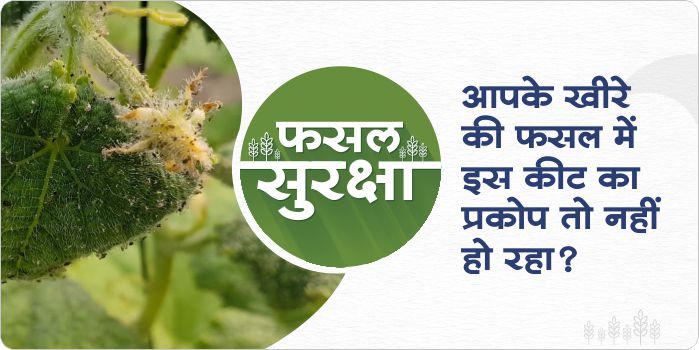- Timely weed management is very important for good crop production of garlic, for this it is very important to manage weeds in the following manner.
- pendimethalin 38.7% CS @ 700 ml/acre, is recommended for effective weed control in garlic after 3 days of sowing
- OXADIARGYL 80% WP @ 50 gram/acre is used for effective weed control after sowing 10-15 days of garlic
- PROPAQUIZAFOP 5% + OXYFLUORFIN 12% EC @ 250-350 ml/acre is used 25–25 days after sowing of garlic and also used in 40–45 days of sowing
How to control mite in garlic crop
- Symptoms of mite:- These pests are small and red in color, which is found in large quantities on the tender crop parts such as leaves.
- Webs are visible on the mite-infested plant. This pest attacks on the soft parts of the plant by sucking the sap and eventually killing the plant.
- The following products are used to control mites in garlic crops.
- PROPARGITE 57% EC 57% EC @ 400 ml / acre or SPIROMESIFEN 22.9% SC @ 200 ml / acre or ABAMECTIN 1.9 % EC @ 150 ml / acre.
- as a biological treatment Use METARHIZIUM ANISOPLIAE @ 1 kg / acre as a biological treatment
Villagers will be able to get bank loan easily through this scheme
PM Modi has distributed property cards of 1 lakh people to their homes in 763 villages of 6 states under the ownership scheme. All the beneficiaries covered under this were sent a link through the message from which the beneficiaries downloaded their ownership card online.
On this occasion, the Prime Minister said, “The ownership scheme is going to help a lot in making our brothers and sisters living in the village self-reliant.” PM Modi further said, “The experts all over the world have been insisting that ownership of land and house has a big role in the development of the country.”
Significantly, for the first time, such a big step is being taken through new technology. The biggest benefit of this scheme will be in taking bank loans to villagers. It is being said that this move of the government will pave the way for the villagers to take the loan and use the property as a financial asset for other financial benefits.
Source: Krishi Jagran
ShareHow to protect the carrot crop from carrot fly outbreaks?
- The flies lay their eggs around the developing carrots.
- Maggots of about 10 mm in length cause damage to the outer part of the carrot roots, mainly during October-November, gradually entering and damaging the internal parts of the roots.
- Carrot leaves start drying up. They first turn yellow and then turn red. Brown tunnels begin to appear under the outer skin of mature roots.
- use CARBOFURAN 3 % GR@10 kg/acre o or FIPRONIL 0.3% GR@10 kg/acre
- As a biological treatment, BEAUVERIA BASSIANA @ 250 gram/ acre as soil treatment
- All these products used as soil treatment.
Symptoms of Stemphylium Blight in Onion
- Small yellowish to orange spots or streaks are seen in the middle of the leaves.
- In later stages, elongated spindle-shaped spots surrounded by pinkish margin develop in the middle of leaves.
- The disease appearing on the inflorescence stalk causes severe damage to the seed crop.
- At the interval of 10-15 days after transplanting or if symptoms of the disease appear, use fungicides such as
- Spray THIOPHANATE METHYL 70% W/W @ 250 gram / acre or CARBENDAZIM 12% + MANCOZEB 63%WP @ 300 gram / acre.
- HEXACONAZOLE 5% SC@ 400 ml/ acre or TEBUCONAZOLE 10% + SULPHUR(S) 65% WG @ 500 gram / acre.
- Spray CHLOROTHALONIL 75% WP @ 250 gram / acre or KASUGAMYCIN 5% + COPPER OXYCHLORIDE 45% WP @ 300 gram / acre.
- As a biological treatment use PSEUDOMONAS FLUORESCENS @ 250 gram / acre or TRICHODERMA VIRIDE @ 500 gram/acre.
Share
Yellow Mosaic Disease in Okra/Bhindi
- This disease is transmitted by whitefly and infects all the stages of Okra and severely reduces growth and yield.
- In this disease, the veins of the leaves start appearing yellow. After which the leaves begin to curl.
- The fruits of the infected plants exhibit pale yellow color, deformed and small in shape and stiff in texture.
- Remove and destroy disease-affected leaves/plants from fields to avoid secondary spread.
- Don’t leave the affected plant, burn them, or put it in the manure pit.
- Spray ACETAMIPRID 20 % SP @ 100 gram / acre or DIAFENTHIURON 50 % WP @ 250 gram / acre or PYRIPROXYFEN 10 % + BIFENTHRIN 10% EC @ 250 ml / acre
- Spray BEAUVERIA BASSIANA @ 250 gram/acre as biological treatment.
How to protect the cucumber crop from the outbreak of Aphid?
- Nymphs and adults both insects are soft-bodied, pear-shaped, and blackish in color.
- Large colonies of nymphs and adults are found on tender twigs and shoots as well as on the ventral leaf surface sucking the vital sap from the tissues.
- The affected parts turn yellow, get curled, wrinkled, and deformed in shape and ultimately dry and die away.
- Fruit size and quality is also reduced.
- The aphids also exude copious quantities of honeydew on which sooty mold develops which in turn hinders the photosynthetic activity of the vines, resulting in stunted growth.
- IMIDACLOPRID 17.8% SL @ 100ml/acre OR ACEPHATE 75 %SP@ 300 gm/acre OR ACETAMIPRID 20 % SP @ 200 gm/acre OR
- As a biological treatment use BEAUVERIA BASSIANA @ 250 gm/acre
Buy irrigation equipment under this scheme, will get 80% to 90% subsidy
Crop irrigation has an important place in agricultural works and keeping this in mind, the government started the Pradhan Mantri Krishi Sinchai Yojna. Under this scheme, farmers get subsidies on the purchase of irrigation equipment.
Under this scheme, up to 80% subsidy is provided to general farmers, up to 90% subsidy is given to small and micro farmers. Farmers can apply online for this scheme.
The farmers have to submit the application along with the bill to the office after purchasing the irrigation equipment from the registered firm. When the application is approved, farmers are given an 80 to 90% subsidy on the cost. For this scheme, 75% grant is given by the center, while 25% is spent by the state government.
Source: Krishi Jagran
SharePrevention of Fusarium basal rot disease in garlic crop
-
Initially, yellowing of leaves and stunted growth of the plant is observed, which later on proceed to dry downwardly from the tip.
-
In the early stage of infection, the roots of the plant turn pink in colour and start rotting. In an advanced stage, the bulb starts decaying from the lower ends and ultimately the whole plant dies.
-
Favourable conditions:- Ideally moist soil and a temperature of 27 °C help in the development of the disease.
-
For the prevention of this disease use CARBENDAZIM 12% + MANCOZEB 63% WP @ 300 gram / acre orKASUGAMYCIN 5% + COPPER OXYCHLORIDE 45% WP @ or 300 gram / acre
-
As a biological treatment, use PSEUDOMONAS FLUORESCENS @ 250 gram / acre or TRICHODERMA VIRIDE @ 500 gram / acre use near the plant.
ShareAdd your farm with the My Farm section of Gramophone app and keep on getting the exact advice and solutions related to smart agriculture throughout the crop cycle. Share this article with your friends with the share button below.
How to protect crops and soil from bacterial diseases
- Due to excessive moisture and temperature changes in crops and soil, there is a high risk of an outbreak of bacterial diseases.
- Some of the main bacterial diseases are black rot, stem rot, bacterial spot disease, leaf spot disease, bacterial wilt disease,
- Some of these diseases are caused by soil, which damages the soil along with the crop.
- There is a huge impact on the production of crops due to these diseases while also unbalancing the pH of the soil.
- For the prevention of these diseases, it is very necessary to do soil treatment, seed treatment before sowing.
- A spray should be done within 15-25 days of sowing for the prevention of bacterial diseases.










